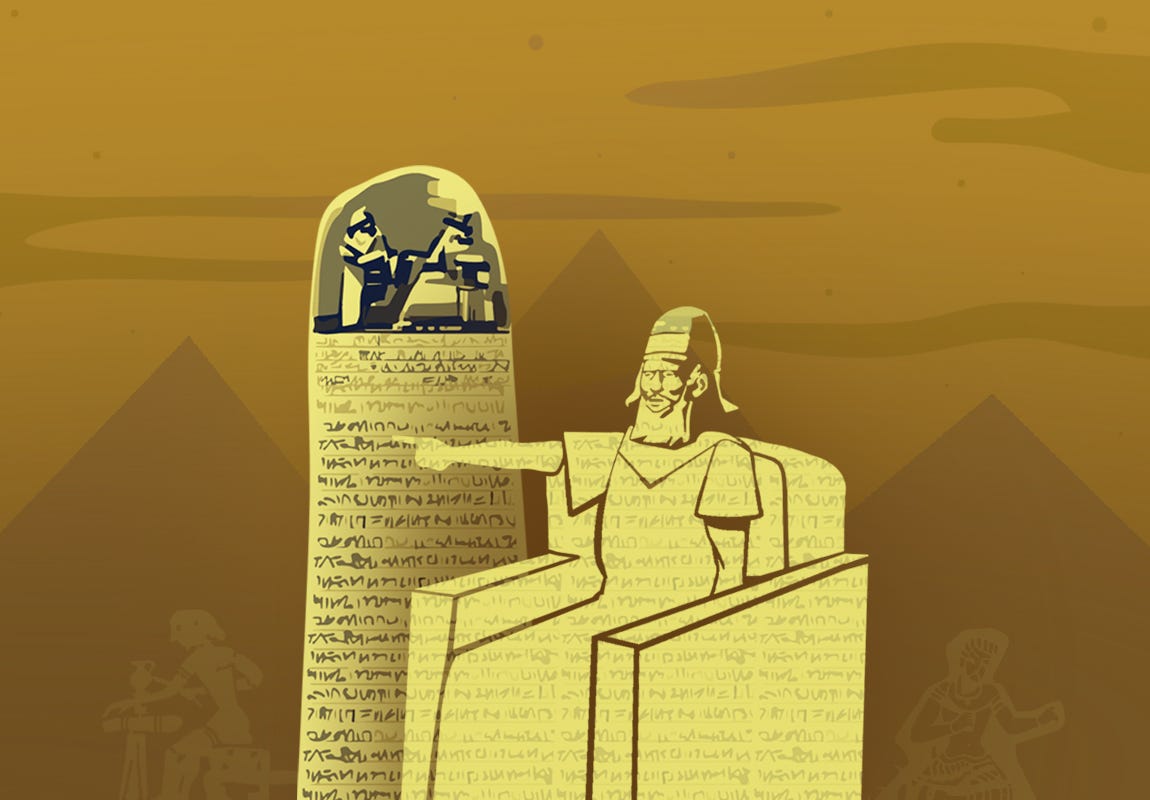An eye for an eye and a tooth for a tooth: this is an expression we may have heard in movie punch dialogues and some fiery speeches by political leaders.
Have you ever thought about the origin of this famous expression? At least some people believe that it first appeared in the Old Testament of the Bible. However, this ideology of rewarding or punishing people according to their actions did not originate from the Bible. This is a sentence from the Code of Hammurabi, which directly or indirectly influenced the Ten Commandments of Moses and the modern laws that exist in nations worldwide.
Who was Hammurabi? What was the Code of Hammurabi?
Before talking about Hammurabi, it is necessary to talk about Mesopotamia first. Mesopotamia was a region between the Euphrates and Tigris rivers that stretched across what is now Kuwait, Iraq, Syria, Turkey, and Iran. This region, which was the cradle of some of the first human civilizations, became an influential force in the growth and development of cultures small and large around the world.
Mesopotamia derives its name from the Greek language. ‘Meso’ means middle and ‘potamia’ means rivers. The word Mesopotamia means ‘place between rivers.’
Mesopotamia was blessed with fertile soil, stable climate, availability of fresh water, and everything else that was necessary for human habitation and agriculture to thrive. It was also the home of many inventions that changed the course of human history, such as the wheel, written language, jurisprudence, shipping, commerce, mathematics, and so much more.
At various times, many cultures had established their dominance in Mesopotamia. The diverse culture of the Sumerian, Akkadian, Assyrian, and Babylonian eras became part of the Mesopotamian civilization. In fact, Mesopotamia is often referred to as the cradle of civilization.
Studies show that this region was inhabited by humans since as early as 10,000 BCE. In 1812 BCE, Sin-Mubalit became the ruler of the Mesopotamian city of Babylonia. During his reign, Mubalit conquered the surrounding cities and expanded the borders of the Babylonian empire. After the resignation of Sin-Mubalit, who fell ill in 1792 BCE, a new era began when his eldest son, Hammurabi, ascended the throne at the age of eighteen.
Code of Hammurabi
In the early days of his rule, Hammurabi focused on infrastructure development in the country, completing projects initiated by his father and building several public institutions and places of worship. The practice of waiving off of debts of citizens who were hard pressed and suffering under mountains of debt made Hammurabi popular.
The Mesopotamian society was divided into three tiers – the nobles who owned the land; the free men or free common folk; and the slaves.
Soon, Hammurabi followed in his father’s footsteps and began to expand his borders more intensely. One by one, Hammurabi annexed Mesopotamian cities to his country and created a Babylonian empire. Hammurabi was hailed as a brave general, a popular leader, and a brilliant ruler, but history remembers him for the vast codes of conduct he created and implemented across his empire.
As mentioned earlier, parts of Mesopotamia, which had long been dominated by various cultures, had become very diverse. Disputes and crimes were settled according to the local laws and regulations of the respective communities. Hammurabi often noticed that in such cases, the educated and influential elites of society bent the laws in their favour. That is why he decided to draft a code of conduct that would apply equally to all the people of his empire.
The Mesopotamian society was divided into three tiers – the nobles who owned the land; the free men or free common folk; and the slaves. The Code of Hammurabi was formulated to take into account these three categories of people and their respective places in society.
The ideology that reward or punishment was contingent on people’s actions formed the basis of dispute resolution among people from the same strata of society. Hammurabi’s Code touches on all areas of modern law today such as crime, agriculture, family, basic wages, and the duties of officials.
Out of the 282 laws of Hammurabi’s Code, the 196th law is the most famous one: “If a man destroys the eye of another man, they shall destroy his eye.”
The Code of Hammurabi, believed to have been instituted in 1772 BCE, was discovered during an excavation in 1901 by French archaeologists. The code was inscribed on a plaque about seven and a half feet high and in Cuneiform, a logo-syllabic script used in ancient Middle-Eastern languages.
Above the plaque were carved figures of Shamash,who was revered in the Babylonian mythology, as the Sun God and the God of justice and fairness, and figures of Hammurabi himself. It was a depiction of Hammurabi receiving the code from the hand of God. Hammurabi presented to the people that his laws were given directly by God to gain acceptance among his subjects. We can see Ur-Nammu, the Sumerian king who drafted the code before Hammurabi, and Moses years later, following the same pattern.
Out of the 282 laws of Hammurabi’s Code, the 196th law is the most famous one: “If a man destroys the eye of another man, they shall destroy his eye.” This is the kind of justice that can be seen throughout the Code of Hammurabi. The 197th law states: “If he breaks another man’s bone, they shall break his bone.” Similarly, the 200th law states: “If a man knocks out a tooth of a man of his own rank, they shall knock out his tooth.”
This only applied to those who belonged to the same strata of society. The code further stipulates that if landlords belonging to the upper stratum committed an act of aggression against someone from any of the other two lower strata, then they were only required to pay a fine.
Many of the rules in the Code of Hammurabi may seem absurd and strange to us. For minor and major crimes ranging from theft to murder, the penalty was death. The penalty for over 30 crimes was death. If a house collapsed and it resulted in the death of the house owner, then the one who constructed the building would be sentenced to death. If the son of the house owner died, then the son of the builder would be killed.
The law gave women the right to obtain a divorce and get back the dowry if the husband was unable to protect her.
The penalty for lying and perjury was also death. The law commanded that a man would be thrown into the holy river Euphrates and killed if he was unable to prove his accusation against anyone. In case the offender survived this punishment, then he would be acquitted and the other party would be subjected to the same punishment.
Any allegation was settled based on the evidence furnished. Both the plaintiff and the defendant had the opportunity to present their case and defend it before the judge. Judicial courts around the world today follow the same pattern for prosecution. The Code deals with marriage, dowry, family, children, divorce, trade laws and the wages to be paid for each occupation.
The law gave women the right to obtain a divorce and get back the dowry if the husband was unable to protect her. Whether the divorced couple was childless or not, there were clear instructions on how to divide the property after the divorce.
Similar to the Asoka Pillars, Hammurabi erected stone tablets in the most important places of the Babylonian Empire so that the rules and regulations were visible to everyone.
Hammurabi ruled Babylon for 43 years until 1750 BCE. After Hammurabi’s death, his son Samsu-Iluna took over the throne, but the Babylonian Empire gradually declined and was totally wiped out by the 16th century BCE. With the fall of Babylon, Hammurabi’s Code went into oblivion.
Here is an excerpt from the preface to Hammurabi’s Code: “... that justice may be visible in the land, the wicked and the workers of iniquity may be destroyed, and the mighty shall not persecute the weak.” This is the basic principle of any modern law.
Historians point out that Hammurabi’s greatest shortcoming was that it did not treat all human beings equally, as it was based on the hierarchy that existed in ancient Babylonian society. Nevertheless, the basic principles of justice and fairness upheld by Hammurabi’s Code are still relevant today.
Now put on your thinking hats and think about the following questions for a couple of minutes.
As a teacher, how would you describe the term "Hammurabi's Code" to your students?
Can you think of the ways in which Hammurabi's code influenced the modern day judicial system?
Do you think that the basic principles of justice and fairness upheld by Hammurabi’s Code are still relevant?
Write down your thoughts and discuss them with your students, children and your colleagues. Listen to their views and compare them with your own. As you listen to others, note how similar or different your views are to others’.
Thank you for listening. Subscribe to The Scando Review on thescandoreview.com.
Happy Teaching!













An eye for an eye, a tooth for a tooth: The Code of Hammurabi